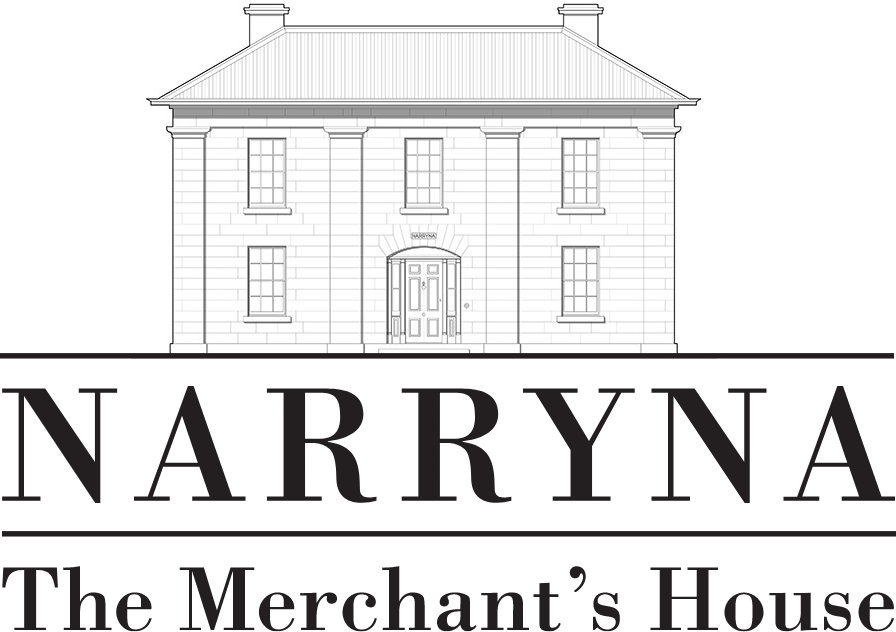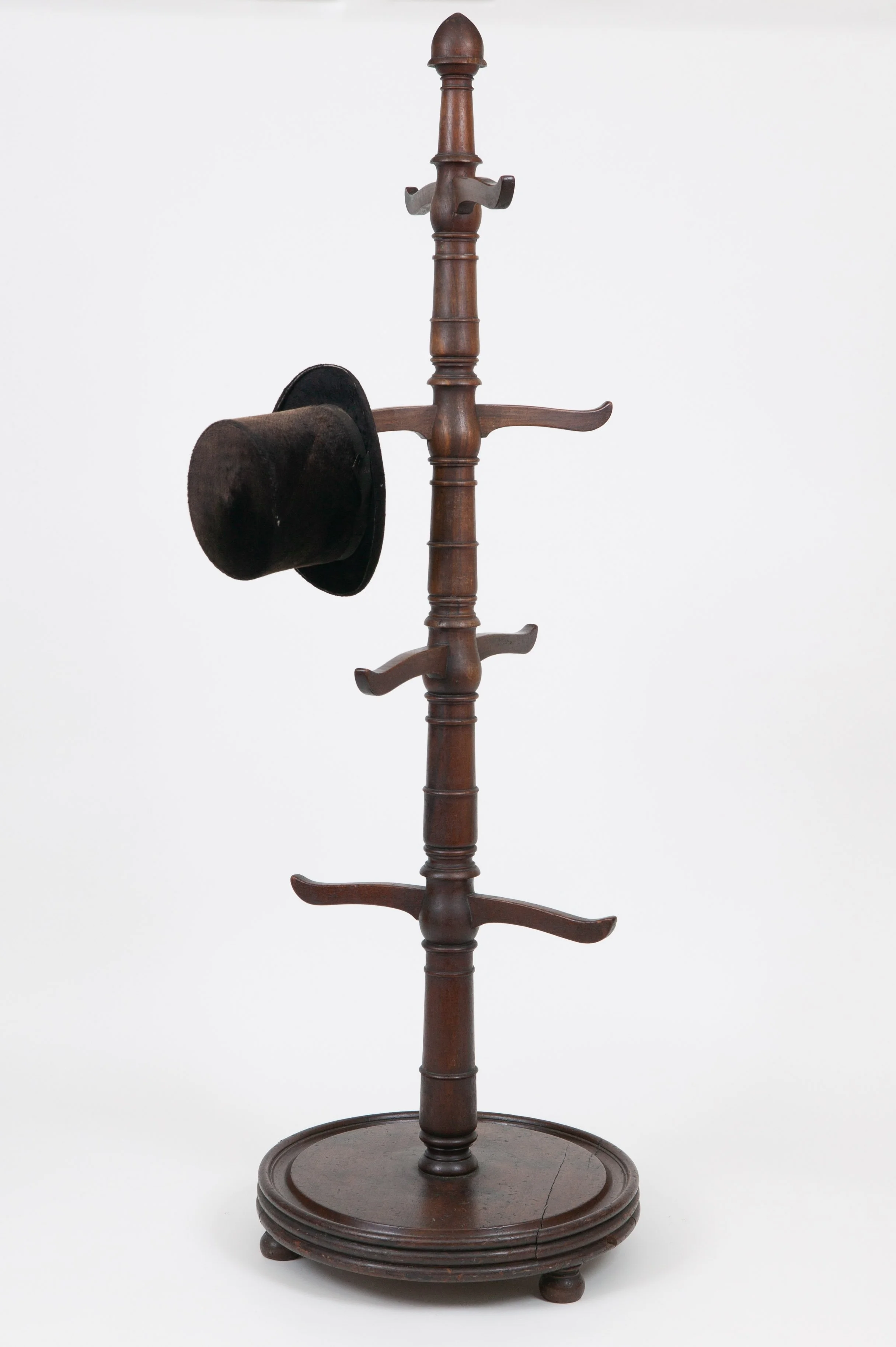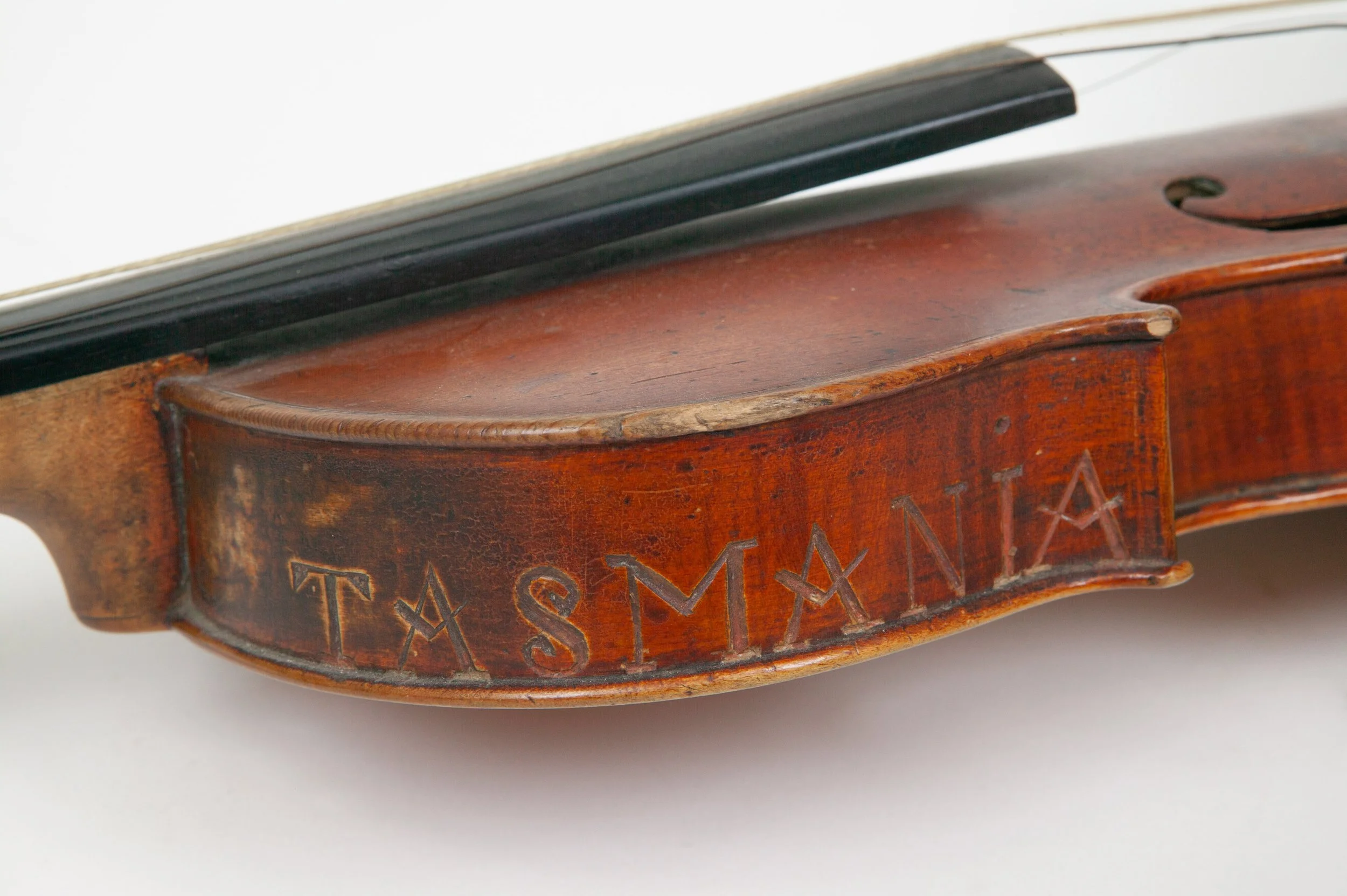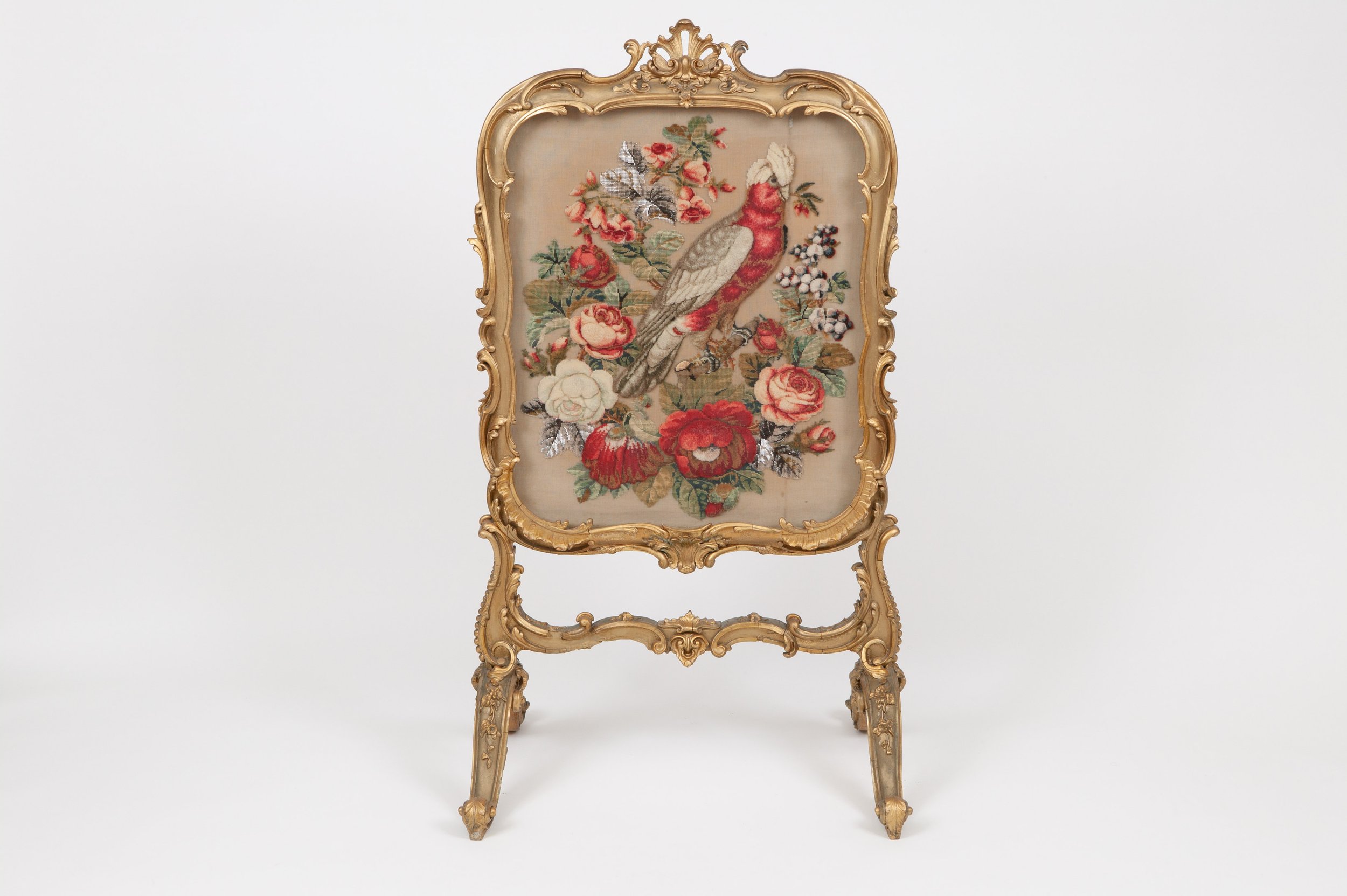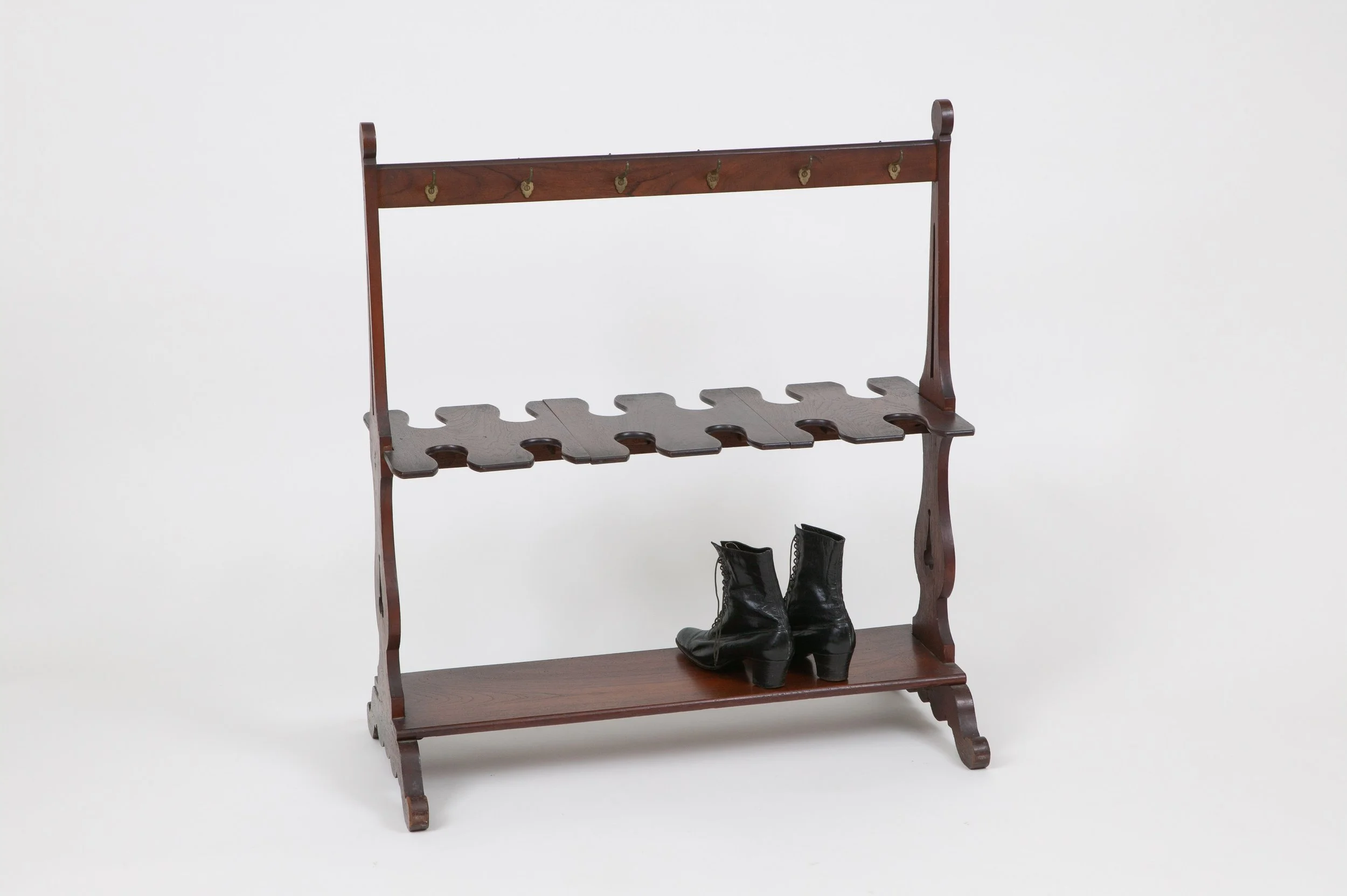NarrynA
Our Collections
Tasmanian Made
Narryna’s furniture collection includes campaign pieces (such as Captain Haig’s desk and the servants’ quarters iron beds) which were made to be demountable and therefore easily transported across the globe as part of the imperial program. Furniture in Narryna’s formal rooms (such as Mrs Haig’s rosewood tea poy) communicated taste and wealth through its design qualities. 19th Century domestic interiors were gendered with the dining room treated as a masculine domain and furnished with darker timbers (such as Australian red cedar and mahogany) while the drawing room was treated as a feminine domain and furnished with lighter timbers such as Tasmanian Huon pine. Narryna’s furniture includes pieces by William Hamilton, Samuel Joscelyne and the convict cabinetmaker, William Briggs together with many vernacular pieces.
Huon pine half tester double bed c.1865
In the 1840s the fashion for four post beds gave way to half-tester beds with curtaining restricted to the canopy at the head of the bed.
A similar half tester double bed (in cedar) was supplied by Samuel Joscelyne of Launceston (active 1854-1877) to Woolmers, Longford, for the visit of HRH the Duke of Edinburgh in 1868.
Donated by a descendant of the Bassett-Dickson family
Hallstand c1830 (entrance hall)
Australian red cedar (Toona ciliata)
This rare Tasmanian-made hallstand is testament to the woodturner’s craft. Cedar (Toona ciliata) is endemic to India, south-east Asia and mainland Australia’s east coast. It does not grow in Tasmania but was imported as easy to work for furniture-making and joinery.
Engraved with the name of ‘W. J. Maum’, the violin’s original owner
games table
This games table (the top is inlaid as a chess board) in Huon Pine (Lagarostrobos franklinii) is attributed to cabinetmaker, William Hamilton (c. 1796-1885, active in Tasmania from 1832) and has his characteristic ‘centurion’s skirt’ apron and scroll feet.
Donated by Miss CM Shoobridge, who has received it from her grandmother, Mrs Davenport of Richmond
Firescreen c1855 (drawing room)
Firescreen c. 1855 in plushwork embroidery featuring and Australian galah amidst English roses.
Worked by Emily Swan of Beaulieu, New Town for her sister, Maria Nairn, of Lynton, Augusta Road, New Town.
Presented by Lady Linsdell (née Evelyn Butler) of The Heymarsh, Britford, England
Posture Chair
Posture chair in Tasmanian blackwood (Acacia melanoxylon). This type of chair was designed by Sir Astley Cooper (1768-1841) to improve the deportment of young children. Used as a punishment, the small seat, high legs and straight back forced the child to either sit upright or to topple off. Good deportment was seen as a sign of good breeding.
Donated by Miss Violet Mace (1890-1968), who was a descendant of the Meredith and Mace families of Swansea on Tasmania’s east coast
Bootjack c1850 (guest bedroom)
Tasmanian blackwood (Acacia melanoxylon)
This flamboyantly turned bootjack is ideal or removing shoes or boots without having to stoop to the floor. The user holds the shaped timber plate to the floor with one foot and puts their other heel in the open loop which allows them to lever off their boot.
Boot rack c1855 (guest bedroom)
Australian red cedar (Toona ciliata)
The boots were put heel first into the bays on the top board. Brass hooks held riding crops.
